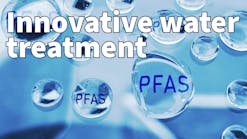A few weeks ago we discussed the repeal of the Waters of the US rule, a policy that in 2015 expanded the types of waterways protected by the federal government to include smaller streams that drain into major rivers, bays, and drinking water sources.
On February 28, President Trump signed an executive order that directs the repeal of the WOTUS rule and its replacement with a revised policy that restricts the bodies of water that are subject to pollution regulations. How might the repeal affect water utilities? What impact would it have on consumers? We thought that these would be interesting topics to explore with water industry leaders.
We reached out to Pete Mulvaney, from the energy and utilities consulting department of West Monroe Partners for his perspective on how the repeal of WOTUS may affect both water utilities and consumers. Mulvaney specializes in delivering water management services from source water protection through consumption and reclamation. We’re grateful for his insightful contribution.
Water Efficiency (WE): How would you define a “navigable waterway” and why is this term pivotal for the repeal of WOTUS?
Pete Mulvaney (PM): A “navigable waterway” can be summarized as being able to pass a vessel. WOTUS is a broader definition and can include wetlands, lagoons, and a variety of aquatic ecosystems which are tied to interstate commerce. I think the definition is pretty solid as it stands, but would like to see clarity to the definition of small streams and tributaries and shallow aquifers. This is pivotal as the definition establishes what waters are regulated by the CWA. Ambiguous definitions lead to confusion and inconsistent enforcement, which leads to discontent. Inclusion of these waterways in the definition does not equate to bureaucratic or burdensome permit process as some would have us believe.
If we were to offer a better idea, it would be to define WOTUS by ecological service and boundaries—such as whether something is a wetland, stream, lake, or pond—as opposed to whether the waterway is navigable.
WE: What effects might the repeal of WOTUS have on water utilities?
WE: What would a WOTUS repeal mean for water consumers if increasing water protection responsibilities are placed in the hands of states?
PM: A WOTUS repeal would mean a more diverse set of rules, a more diverse application of technology, and likely a less consistent protection of our public health. Not necessarily better or worse, but less consistent. States may choose to step up and provide more comprehensive protection—or not. There are, by some estimates, more than 100 million Americans who rely on small streams for drinking water. I would be hopeful that states where the population relies on small streams for source waters would step up where the federal government does not. The risk is you’ll have states like Wisconsin, which are actively dismantling water protections.





